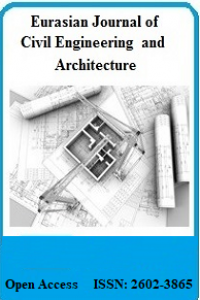A Mathematical Model Proposal on the Parameters of Urban Transformation Zoning Practices
A Mathematical Model Proposal on the Parameters of Urban Transformation Zoning Practices
One of the most important problems encountered in urban transformation applications is to allow an understanding of urbanization in order to convince the inhabitants of the transformation zone and to increase the value of the land. In particular, it is a method used by politicians to save the day and get votes. These extra zoning increases lacking scientific foundation make the city's quality of life, transportation, air and water worse from day to day. For those who dream of living in the transformational areas, which are old, worn, not resistant to earthquake-resistant structures, and in the realm of implementation within the framework of international planning standards, these extreme zoning promises become a dystopian city at the end of all. In this article, in the light of national and international standards and recommendations, zoning parameters (floor area ratio – FAR, building coverage ratio (BCR), construction area, car park, shelter, etc.), which is one of the major problems of the transformation areas, are formed by combining planning, architectural thinking and engineering parameters. It is attempted to bring a regulatory proposal to the Draft Urban Transformation Model (DUTM).
Keywords:
Urban transformation, mathematical model zoning,
___
- Ataöv, A. and Oamay, S. 2007. Türkiye’de Kentsel Dönüşüme Yönetsel Bir Yaklaşım. Middle East Technical University Journal Of The Faculty Of Architecture, 24 (2): 57-82.
- Polat, H. I. 2017. Türkiye’de Kentsel Dönüşüm Uygulamaları İçin Matematiksel Bir Model Önerisi, (A mathematical model suggestion for urban transformation in Turkey) Doctorate Thesis, Yıldız Technical University, İstanbul.
- Thomas, S. 2003. A Glossary of Regeneration and Local Economic Development. Manchester: Local Economic Strategy Center.
- Verschaffel, L., Greer, B. and De Corte, E. 2002. Everyday knowledge and mathematical modeling of school word problems. In Symbolizing, modeling and tool use in mathematics education (pp. 257-276). Springer Netherlands.
- Başlangıç: 2017
- Yayıncı: Serkan ŞAHİNKAYA
